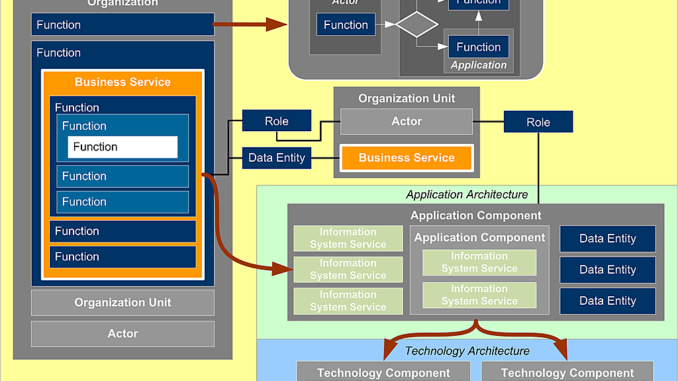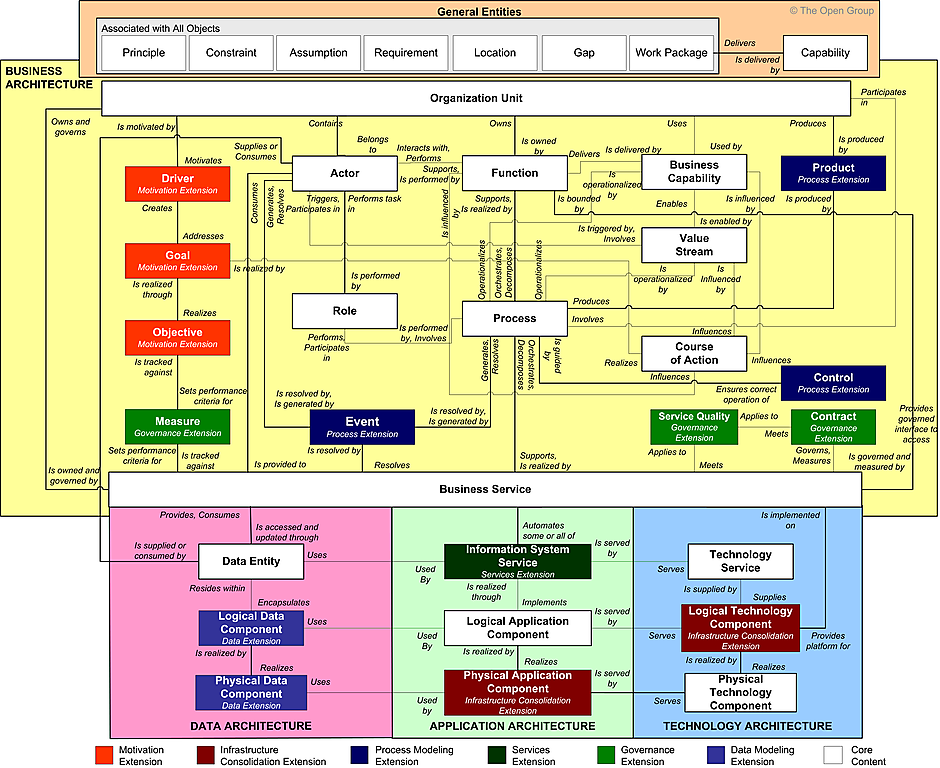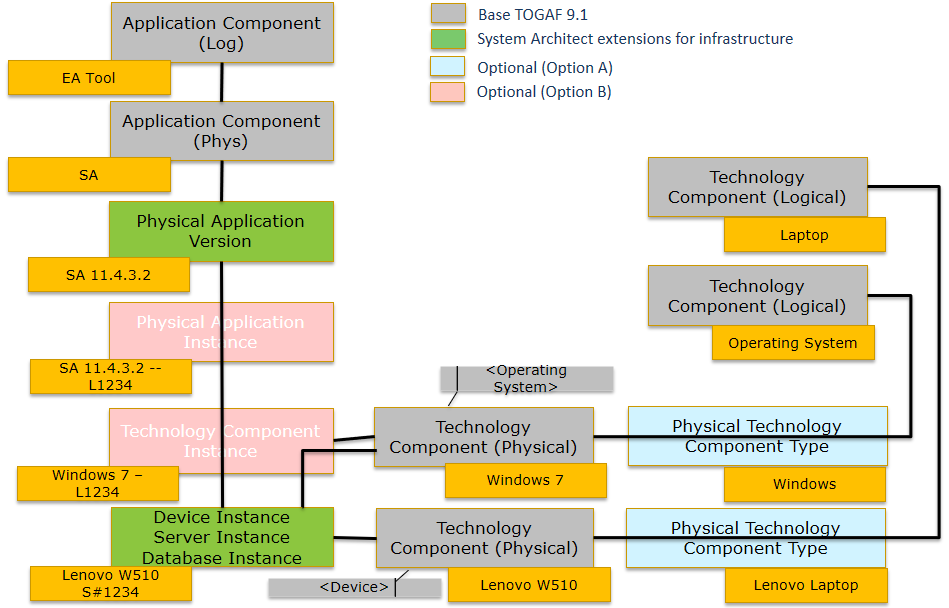
The Open Group Architecture Framework (TOGAF) 9.2 metamodel is published to this page: https://pubs.opengroup.org/architecture/togaf9-doc/arch/chap30.html
For convenience, the extended content metamodel is here:
UNICOM Real-World Extensions
The System Architect team, in working with customers in the field trying to model their infrastructure, have developed the following ‘real-world’ metamodel extensions to TOGAF 9.2:
We introduce:
Physical Application Component Version — the version of a physical application that is deployed. For example: System Architect 11.4.7.2, whereas System Architect is the physical application, and enterprise architecture tool is the logical application.
Device Instance, Server Instance, and Database Instance are sub types of the abstract Configuration Item — each are physical items that are installed to a Location. A Physical Application Component Version is installed to a Device Instance or Server Instance.
Technology Component Type — note that in the TOGAF information, Technology Component of type Physical is the version of a Technology Component — example, Microsoft SQL Server 2018, or Oracle 12. TOGAF is inconsistent here with Application Components — their examples of an Application Component would be Microsoft Word, or System Architect — not the version of the Application. In consideration of this, we introduce Technology Component Type to capture the type of physical Technology Component. So in the example above, Microsoft SQL Server or Oracle would be a Technology Component Types, and Microsoft SQL Server 2018 or Oracle 12 would be Technology Components.
Optional:
Optionally you can turn on a metamodel option to capture the following:
Physical Application Instance — although we allow you to turn on this option to capture information at this level of detail — the instance of an application — for example, System Architect 11.4.7.2 authorized user licence XYZ installed to a particular machine — it is probably too much information for an enterprise architecture.
Technology Component Instance — although we allow you to turn on this option to capture information at this level of detail — the instance of an technology component — for example, Microsoft Windows 10 authorized user licence XYZ installed to a particular machine — it is probably too much information for an enterprise architecture.



Be the first to comment